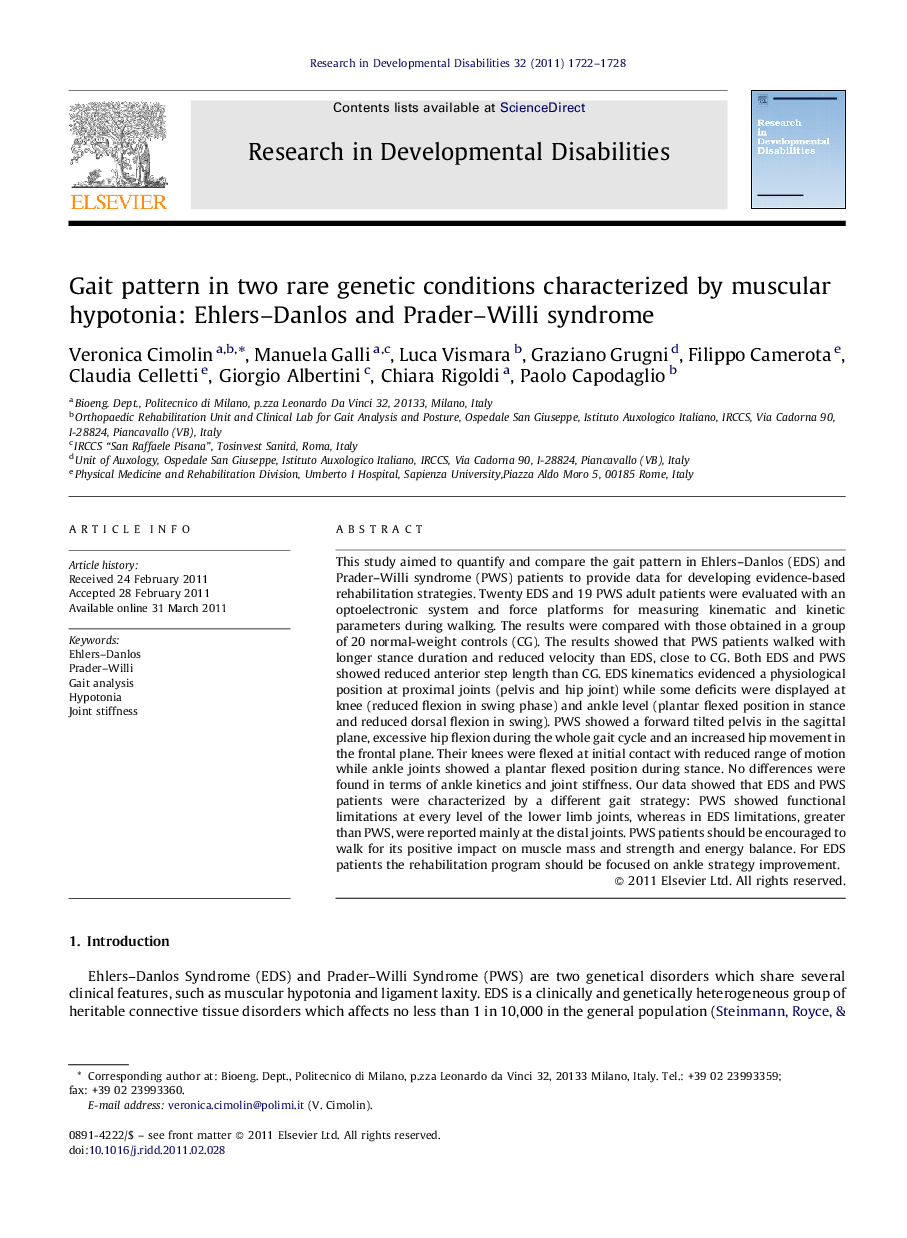| Article ID | Journal | Published Year | Pages | File Type |
|---|---|---|---|---|
| 371705 | Research in Developmental Disabilities | 2011 | 7 Pages |
This study aimed to quantify and compare the gait pattern in Ehlers–Danlos (EDS) and Prader–Willi syndrome (PWS) patients to provide data for developing evidence-based rehabilitation strategies. Twenty EDS and 19 PWS adult patients were evaluated with an optoelectronic system and force platforms for measuring kinematic and kinetic parameters during walking. The results were compared with those obtained in a group of 20 normal-weight controls (CG). The results showed that PWS patients walked with longer stance duration and reduced velocity than EDS, close to CG. Both EDS and PWS showed reduced anterior step length than CG. EDS kinematics evidenced a physiological position at proximal joints (pelvis and hip joint) while some deficits were displayed at knee (reduced flexion in swing phase) and ankle level (plantar flexed position in stance and reduced dorsal flexion in swing). PWS showed a forward tilted pelvis in the sagittal plane, excessive hip flexion during the whole gait cycle and an increased hip movement in the frontal plane. Their knees were flexed at initial contact with reduced range of motion while ankle joints showed a plantar flexed position during stance. No differences were found in terms of ankle kinetics and joint stiffness. Our data showed that EDS and PWS patients were characterized by a different gait strategy: PWS showed functional limitations at every level of the lower limb joints, whereas in EDS limitations, greater than PWS, were reported mainly at the distal joints. PWS patients should be encouraged to walk for its positive impact on muscle mass and strength and energy balance. For EDS patients the rehabilitation program should be focused on ankle strategy improvement.
► Ehlers–Danlos and Prader–Willi syndrome shared some clinical and functional features. ► Ehlers–Danlos and Prader–Willi adult patients were characterized by a different gait strategy. ► Prader–Willi showed functional limitations at every level of the lower limb joints, whereas in EDS limitations, greater than PWS, were reported mainly at the distal joints.
